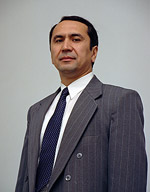
|
Automation of a regional patent organization has its peculiarities. On the one hand, the processes to be automated (all stages of Eurasian application processing) are quite repetitive, which makes formalizing them easier; on the other hand, the streams of information thus created place high requirements to the system and equipment. They are a result of the intensive use of the internal and external global funds of patent and non-patent information by the examiners. Patent documentation changes but very little with time, which makes setting up and maintaining the patent fund considerably easier, but the requirement that the patent search be complete and responsible presents a serious complication. On the one hand, there are many standards and recommendations (from ISO, WIPO and others). On the other, at times some of them cannot be observed when new technologies are introduced.
One more peculiarity of automation in a regional patent office is the need to interact with patent offices of the states that have different laws on industrial property protection, and to render help to these.
The main objectives of the activity of EAPO, according to a number of normative and legislative documents, are the examination of applications, publishing activity, patent search, the granting of Eurasian patents, and their maintenance.
Appropriate divisions have been created within EAPO for the types of activity mentioned above.
Automation of EAPO has, as its goal, the assurance of quality at all stages of application processing, using modern technologies while minimizing costs. The following factors need to be taken into consideration to successfully meet this non-linear and multi-parameter goal:
Three main long-term principles of EAPO automation may be identified.
First is orientation towards paperless technologies.
From the very beginning the management of EAPO has been paying close attention to computerization, and quite a lot has been accomplished in that direction. The technology of scanning, digitalization and editing of full invention descriptions has been mastered for Eurasian applications and patents. This has allowed EAPO to prepare official materials for publication, form the database of Eurasian applications and patents, and prepare its official publications for release on CD-ROMs.
Second is the achievement of the status of an International Searching Authority because EAPO has such a right according to the Eurasian Patent Convention.
According to the requirements for International Searching Authority (Rules 36 and 34 of the PCT), EAPO is to compile the patent fund on CD-ROMs.
As a result of correspondence with the patent offices listed below, CD-ROM-based information with appropriate software was added to the EAPO fund from:
WIPO - since 1990,
EPO - since 1978,
USA - since 1994,
Germany - from the second half of 1978,
Great Britain - since 1979,
Japan - since 1976,
Austria - since1990,
Russia - since1994,
France - since 1978.
Disks of the GLOBALPAT series from 1971 and of the INSPEC series from 1988 are available.
In 1999 a single search system able to access all of them was developed and implemented.
Third, it is the development of EAPO together with the national offices of the states party to the Eurasian Patent Convention.
EAPO intends to participate in all regional events and projects, and specifically in the issue of regional CD-ROM. At this time the EAPO Web-server, which will host Web Sites of national patent offices, is being developed. In addition, access of national patent offices to global patent funds via Internet will be organized.
Based on the character of the EAPO activity and the principles presented above, automation will pursue the following directions:
These directions imply the following projects and stages of work.
Dial-up Internet access was arranged in August of 1997.
Since the beginning of 1998 EAPO has been conducting its own preparation of materials for publication, and since March of 1999 it was issuing its own CD-ROMs with full descriptions of patents.
In January of 1999 a 128 kbit/s dedicated line was put into operation. Each expert now has practically unlimited Internet access.
The issue of CD-ROMs with EAPO bulletins Inventions (Eurasian Applications and Patents) from 1996 to 1997. A retrospective CD-ROM with the Eurasian Patent Organization's patents has been released.
As it was noted earlier, this work is under way. A number of offices kindly availed their information funds (EPO, Austria, Japan, Germany, USA).
The first step will be to arrange Internet access from all national offices and to develop their websites.
The plan is to make the Organization one of the nodes of this network on the basis of an electronic library of patent documentation.
Work is under way in all directions listed above. Some of them are already completed, but will be further developed nevertheless. First steps were made in other directions, but the outline of what we may expect in the future is already quite visible. Three information divisions, with 18 qualified experts, assure successful development in that area. Plus, the establishment of the Eurasian Patent Organization and its Office matched finding solutions for several technological, software and methodological problems on the global level, which made most projects viable, especially in the view of lower cost of computer equipment.